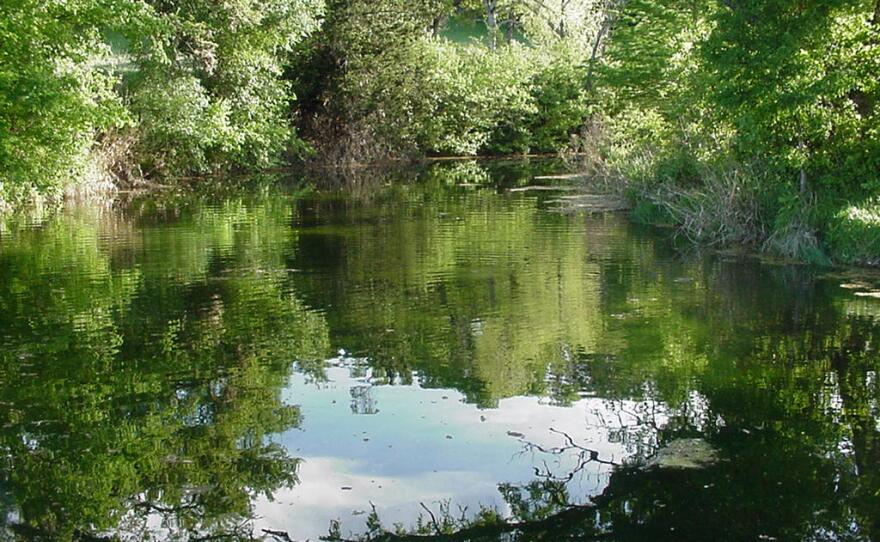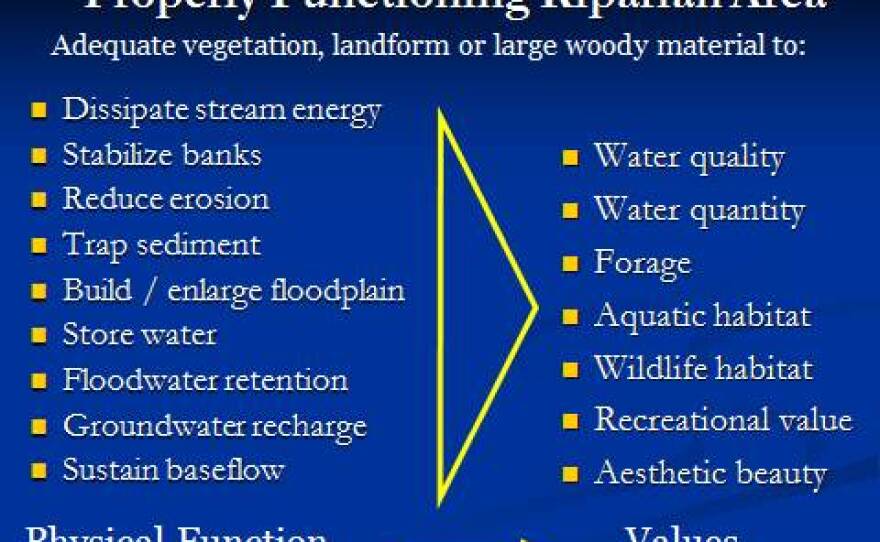There's something special about the plants and animals that are found alongside naturally occurring bodies of water.
Audio transcript
Mark Haslett: With suburban sprawl from the metro Dallas area slowly creeping out into Northeast Texas, there's the mix of excitement and anxiety that comes with development. Excitement because we could use the economic activity along with more commercial and cultural resources. And anxiety because many of us would rather not be suburbanized. The open stretches of thicket and prairie are part of the quality of life here. People like some green space and they like to see evidence of nature. One important way to keep the natural world healthy while humanity's world is expanding is to look after the health of riparian areas.
Nikki Dictson: A riparian, using that term is fairly new and fairly new in Texas, and so a lot of people don’t usually know the meaning of that. But it is that transition area between our streams and rivers, any of our water bodies, and then the upland land areas.
Haslett: Nikki Dictson is an Extension Program Specialist for the Texas Water Resources Institute and Texas Agrilife Extension. Dictson spoke with KETR from College Station. She says that riparian areas have a high level of biodiversity.
Dictson: Especially if they’re healthy riparian areas. They’ll have a lot of variety of different plant species, they’ll have grasses, they’ll have shrubs, and a variety of trees. And typically we want to see these plants in different age classes too, so you’ll have old, established trees and new, younger trees.
Haslett: A variety of plants – that sounds obvious, right? But consider that development usually replaces the existing ecosystem with what ecologists call a monoculture. Maybe row crops for agriculture. Maybe thirsty ,non-native grasses for landscaping. Biodiversity might sound like a basic concept but it’s increasingly less common. Also, the native plants along riparian areas are crucial, not just for animal habitat, but also for the health of the waterway.
Dictson: If we do things that reduce that amount of that specialized riparian vegetation that has unique capabilities to have a large amount of root systems in a small area. Those are the things that are able to do things like stabilize the banks there along our rivers. When that vegetation has something that happens to it that removes it there, then we don’t have that vegetation stabilizing those banks. We see more erosion. We start to see our streams and rivers either start widening. They usually start widening, and then they start lowering. A problem with that as well is that all of that soil that’s eroded away along those stream banks and those systems is then carried down and moved down stream and deposited at the next location. And many times that’s in our lakes and reservoirs, and then that results in water availability, how much water that can be stored in those lakes and reservoirs for us to be able to enjoy with boating and fishing and to have for drinking water storage.
Haslett: Nikki Dictson with the Texas Water Resources Institute. If you’re a landowner wanting to know how to take care of waterways on your property or you’re just someone who cares about the land, you can learn more about riparian ecosystems online. The state’s website is TexasRiparian.org.









